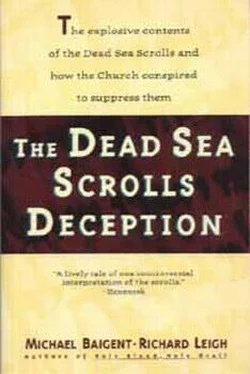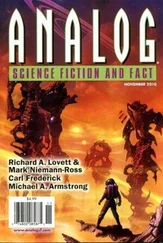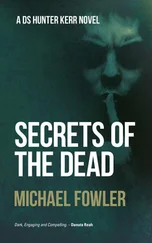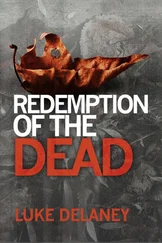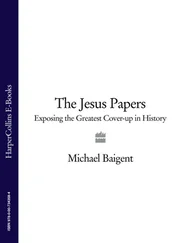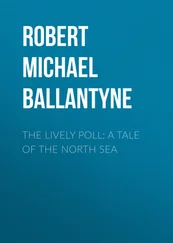Eisenman had learned from the omissions of Roth and Driver. He appreciated that the entire edifice of the international team’s consensus rested on the supposedly accurate data of archaeology and palaeography. Roth and Driver had correctly dismissed these data as irrelevant, but without confronting them. Eisenman resolved to challenge the international team on their own terrain — by exposing the methodology and demonstrating that the resulting data were irrelevant.
He opened his campaign with the book that first brought him to our attention, Maccabees, Zadokites, Christians and Qumran, published by EJ. Brill in Holland in 1983. In this book, he posed the first serious challenge the international team had yet encountered to their archaeology and palaeography. In his introduction, he explicitly flung down the gauntlet to the ‘small group of specialists, largely working together’ who had ‘developed a consensus’. 21Given the text’s limited audience and circulation, of course, the international team could simply ignore the challenge. Indeed, the likelihood is that none of them read it at the time, in all probability dismissing it as a piece of ephemera by an upstart novice.
Eisenman, however, refused to let his efforts be consigned to oblivion. By 1985, his second book, James the Just in the Habakkuk Pesher, had appeared in Italy, ironically under the imprint of one of the Vatican presses, Tipographia Gregoriana. It carried an Italian preface, and the next year, with some additions and a revised appendix, was brought out by EJ. Brill. That same year, Eisenman was appointed Fellow-in-Residence at the prestigious Albright Institute in Jerusalem. Here he began working behind the scenes to acquaint the Israeli government with the situation and raise the scrolls on their agenda of priorities.
The international team’s stranglehold, he realised, could not be broken solely through decorous or even strident protests in learned journals. It would be necessary to bring external pressure to bear, preferably from above. Accordingly, Eisenman met and briefed Professor Ne’eman, and Ne’eman then forced the issue in the Knesset.
Later that year, Eisenman himself approached Father Benoit, and verbally requested access to the scrolls. Predictably enough, Benoit politely refused, adroitly suggesting that Eisenman should ask the Israeli authorities, and implying that the decision was not his to make. At this point, Eisenman was still unaware of the stratagems employed by the international team to thwart all applicants who wanted access to the scrolls. He was not, however, prepared to be excluded so easily.
All scholars during their tenure on the staff of the Albright Institute give one lecture to the general public. Eisenman’s lecture was scheduled for February 1986, and he chose as his subject ‘The Jerusalem Community and Qumran’, with the provocative subtitle ‘Problems in Archaeology, Palaeography, History, and Chronology’. As in the case of his book on James, the title itself was calculated to strike a nerve. In accordance with custom, the Albright Institute sent invitations to all important scholars in the field in Jerusalem, and it was a matter of courtesy for sister institutions, like the French Ecole Biblique, to be represented. Five or six turned up, a higher number than usual.
Since they were unfamiliar with Eisenman and his work, they may not have expected anything out of the ordinary. Gradually, however, their complacency began to crumble, and they listened to his arguments in silence. [2] For an outline of Eisenman’s remarks, see Chapter 10 , Science in the Service of Faith .
They declined to ask any questions at the end of the lecture, leaving without extending the usual courtesy of congratulations. For the first time, it had become apparent to them that in Eisenman they faced a serious challenge. True to form, they ignored it, in the hope, presumably, that it would go away.
The following spring, one of Eisenman’s friends and colleagues, Professor Philip Davies of Sheffield University, arrived in Jerusalem for a short stay. He and Eisenman went to discuss with Magen Broshi, director of the Shrine of the Book, their desire to see the unpublished scroll fragments still sequestered by the international team. Broshi laughed at what apparently struck him as a vain hope: ‘You will not see these things in your lifetime,’ he said. 22In June, towards the end of his stay in Jerusalem, Eisenman was invited to tea at the house of a colleague, a professor at the Hebrew University who would later become a member of the Israeli ‘Scroll Oversight Committee’. Again he took Davies with him. A number of other academics, including Joseph Baumgarten of Baltimore Hebrew College, were present, and early in the evening John Strugnell — Allegro’s old adversary and subsequently the head of the international team — made his appearance. Boisterous and apparently intent on confrontation, he began to complain about ‘unqualified people’ importunately demanding access to the Qumran material. Eisenman responded on cue. How did Strugnell define ‘qualified’? Was he himself ‘qualified’? Aside from his supposed skills in analysing handwriting, did he know anything about history? Ostensibly, it was all a half-joking, more or less ‘civilised’ debate, but it was growing ominously personal.
The next year, 1986-7, Eisenman spent at Oxford, as Senior Scholar at the Oxford Centre for Postgraduate Hebrew Studies and visiting Member of Linacre College. Through contacts in Jerusalem, he had been given two secret documents. One was a copy of a scroll on which Strugnell was working, part of his ‘private fiefdom’. This text, written apparently by a leader of the ancient Qumran community and outlining a number of the community’s governing precepts, is known by those in the field as the ‘ MMT’ document. Strugnell had shown it around at the 1985 conference, but had not published it. 23(Nor has he yet, though the entire text comes to a mere 121 lines.)
The second document was of more contemporary significance. It comprised a computer print-out, or list, of all Qumran texts in the hands of the international team. 24What made it particularly important was that the international team had repeatedly denied that any such print-out or list existed. Here was definitive proof that vast quantities of material had not yet been published and were being suppressed.
Eisenman had no hesitation about what to do:
Since I had decided that one of the main problems between scholars, which had created this whole situation in the first place, was over-protectiveness and jealously guarded secrecy, I decided to circulate anything that came into my hands without conditions. This was the service I could render; plus, it would undermine the international cartel or monopoly of such documents. 25
Eisenman accordingly made available a copy of the ‘ MMT ’ document to anyone who expressed a desire to see it. These copies apparently circulated like wildfire, so much so that a year and a half later he received one back again from a third party who asked if he had seen it. He could tell by certain notations that this was one of the copies that he had originally allowed to circulate.
The print-out, like the ‘ MMT ’ document, was duly circulated, producing precisely the effect Eisenman had anticipated. He made a particular point of sending a copy of it to Hershel Shanks of BAR, thus providing the journal with ammunition to renew its campaign.
By this time, needless to say, Eisenman’s relations with the international team were deteriorating. On the surface, of course, each maintained with the other a respectable academic demeanour of frosty civility. They could not, after all, publicly attack him for his actions, which had been manifestly disinterested, manifestly in the name of scholarship. But the rift was widening between them; and it wasn’t long before a calculated attempt was made to freeze him out.
Читать дальше
